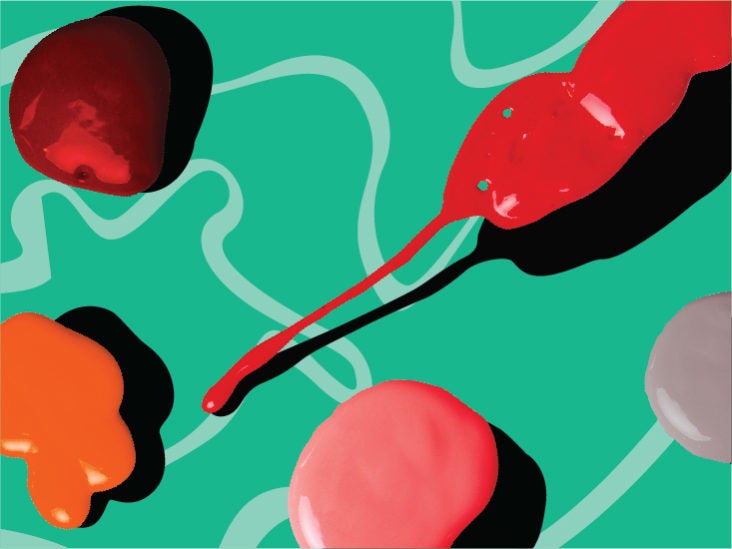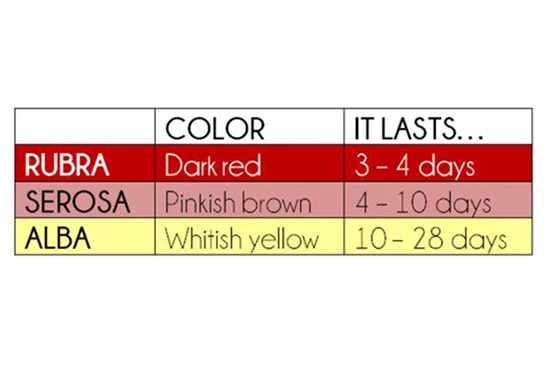Is It Normal For Lochia To Turn Red Again
The lochia rubra gradually changes color to brown and then yellow over a period of about a week. ‘your blood will be red and very heavy.


Old blood tends to be a darker red, brown or black color rather than.



Is it normal for lochia to turn red again. Lochia is typically heavier and dark red in color for up to 10 days after giving birth, and then transitions into lighter bleeding or spotting that can last for four to six weeks after delivery. Exercise or increased activity can cause red bleeding and a heavier flow to reappear. In the next three to four days, the discharge becomes pinkish, and after 10 days, it will become light yellow and creamy in color.
For example, the rate of your menstrual flow can affect period blood color. By day 10 of your baby’s life, that fresh, bright red blood should transition to pink with a more reasonable rate of flow. Miscarriage if you’re pregnant, a gush of.
It may come out intermittently in small gushes or flow more evenly. Bleeding will start off heavy and red to browny red. (asap) but, if the bleeding continues even after you have been resting for a few days, check with your doctor.
If your lochia lasts longer that six weeks, don’t worry. The discharge should keep getting less, and periods of no staining at all will get longer, until eventually the lochia stops altogether. You feel sharp pains low down in your stomach, which only become worse.
Clots are caused by pooling blood and occur in the first two weeks after giving birth, but not usually after. It is called lochia serosa at this stage. It may smell like the blood you typically shed during your menstrual period.
That’s normal too (fletcher et al, 2012). The lochia becomes bright red again after having become paler over the previous days. Blood is a dark red color, but various factors can affect if the blood is pink, brown, bright red, or black.
For those first three to 10 days, your lochia will be a deep, bright red (growing a bit lighter after about four days). You see infrequent bright red spotting after lochia has already lightened. You’re passing clots in the lochia serosa stage.
The lochia becomes bright red again after having become paler over the previous days. You should continue changing your pad regularly, even if they aren’t as full as they were during the first week. The lochia continues to remain bright red even after the first week from childbirth.
There is abnormally heavy bleeding causing a sanitary pad to soak through within 1 hour or less or there is passage of blood clots larger than a golf ball. Postpartum bleeding is heaviest the first few days after baby is born. Usually lochia turns pale pink or brown by the second week after delivery.
By the sixth week, the bleeding will likely subside—but it’s not abnormal for lochia to stop, turn red and then fade back again, especially during the early stages. You’re still experiencing normal lochia, but you may get by with slightly thinner pads during the second week. The first stage of postpartum bleeding is rubra and can last up to four days postpartum.
There is abnormally heavy bleeding causing a sanitary pad to soak through within 1 hour or less or there is passage of blood clots larger than a golf ball. One or more clots are sized as large as golf balls. Although this sounds like a long period of time it is fairly standard amongst most women.
It’s also normal to see clots during this stage. It will become lighter in colour and flow over time (university hospital southampton nhs foundation trust, 2015). But if you continue to spot after taking it easy for a few days, check in with your midwife or doctor.
Click to see full answer. For the first few days after birth, lochia contains a fair amount of blood, so it'll be bright red and look like a heavy period. It is called lochia serosa at this stage.
The first stage of your lochia will be quite red in color due to the amount of blood it contains but as time passes the red color will become less intense and it will become more clear. For the first one to three days after your baby is born, the blood you see will likely be bright or dark red. Lochia can last up to 6 weeks after you have given birth.
Don’t be alarmed however if you find bright red bleeding reappears from time to time throughout the first 6 to 8 weeks. You'll see the difference in the color as this starts to happen, from red to pink, then brown, and finally to a yellowish white. If bleeding and cramps increase, lie down for a few hours.
After three to 10 days, this should change from red to pink. The lochia serosa contains less red blood cells but more white blood cells, wound discharge from the placental and other sites, and mucus from the cervix. Again, when blood from your uterus mixes with clear cervical fluid, it may appear to be light red or pink in color.
Your lochia becomes red in the serosa or alba stages. If you've been lying down for a while and blood has collected in your vagina, you may find some small clots in your underwear. Lochia is a normal part of postpartum healing in which the uterus sheds blood and tissue no longer needed to sustain the pregnancy.
While no treatment is usually needed for lochia, it is important to remember that this bleeding is partially because of the wound left behind when the placenta detaches at birth and begins to scab over and heal. During the rubra stage, lochia bleeding will be bright red and may have some clots, but these clots shouldn’t be big or difficult to pass. 10 votes) if bright red spotting reappears after your lochia has already lightened, it may just be a sign that you need to slow down.
Changes in the color of your period blood usually mean that you are having a normal period.






















0 Response to "Is It Normal For Lochia To Turn Red Again"
Post a Comment